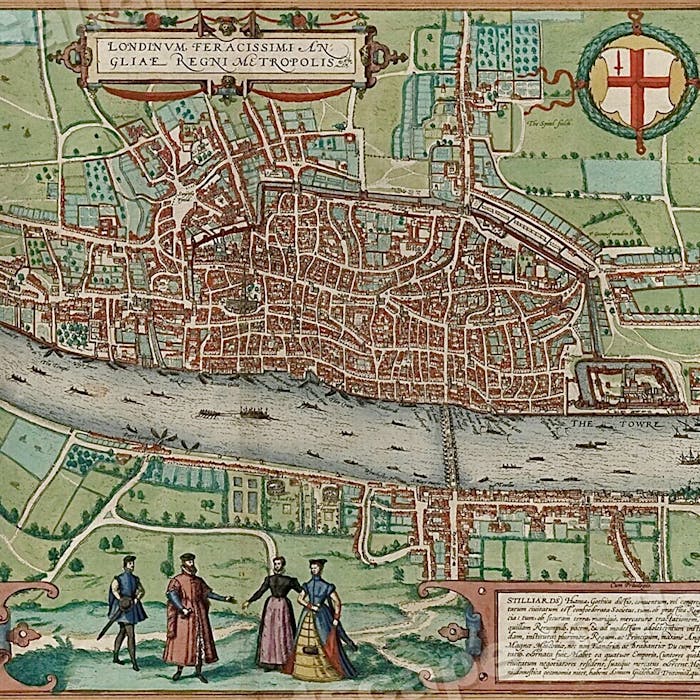
The old gates of London
Names such as Aldgate and Moorgate, for areas of London, originate in the Roman and Medieval gates into the city, which were built into London's defensive wall.
London's wall was built by the Romans in the late 2nd or early 3rd century AD, and later enlarged and adapted in the Medieval period. In the end there were seven gates into and out of London:-
- Aldgate – leading to Colchester and Essex
- Bishopsgate – leading to Shoreditch and up towards Cambridge along the old Ermine Street.
- Moorgate – Not an original Roman gate, it was more than likely a postern (for pedestrians) in Roman times only becoming a gate in 1415. The gate led to the Moorfields a marshy area north of the city.
- Cripplegate – Leading to the village of Islington.
- Aldersgate – leading towards St. Bartholomew's Abbey, Smithfield Market and London Charterhouse. Aldersgate was thought to have replaced a previous gate to the west of the city.
- Newgate – leading towards Oxford and the west.
- Ludgate – leading towards Bath and the South West
Many of the gates had accommodation built into them. Geoffrey Chaucer, for instance, leased the room above Aldgate for more than ten years between 1374 and 1385. Some of these rooms were used as prisons, including at Cripplegate, Ludgate and Newgate. Ludgate once imprisoned a future Mayor of London and, in 1463, his widow gave money to improve the prison at Ludgate in his memory - including water ‘free without charge’!
Most of the gates lasted until around 1760 when they were knocked down to make way for road widening in a rapidly expanding city.
Further reading
Links to external websites are not maintained by Bite Sized Britain. They are provided to give users access to additional information. Bite Sized Britain is not responsible for the content of these external websites.
